A sound exposure level study near the Camden Sound area, Browse Basin*
A. Long A , A. Duncan B , A. Maggi B , J. Colman C , J. Wisløff A , J. Ali A , A. Mostavan A and D. Hedgeland AA PGS.
B Curtin University of Technology.
C Galaxia Marine Environmental Consulting.
The APPEA Journal 51(2) 705-705 https://doi.org/10.1071/AJ10085
Published: 2011
Abstract
A common approach to environmental risk assessment when assessing the level of risk to marine animals during marine seismic surveys is to compare either measured or modelled estimates of underwater sound levels to a known sound level threshold criteria.
Over the years, a number of measures have been used to calculate and characterise underwater sound thresholds, including: sound pressure level (SPL), a root mean square (RMS) calculation, and—more recently—sound exposure level (SEL). SEL was suggested in 2007 by an expert panel of researchers as an appropriate measure to reduce the risk of temporary threshold shift (TTS) occurring in marine animals.
Petroleum Geo-Services (PGS) commissioned an SEL study in preparation for a large MultiClient 3D seismic survey planned for the environmentally sensitive Camden Sound area, Western Australia, in late 2010. The Centre for Marine Science and Technology (CMST) at Curtin University built a comprehensive bathymetric model of the Camden Sound area and used two seabed geoacoustic models, with sand/limestone—as worst case, most reflective—and silt—as best case, least reflective. Acoustic propagation modelling over the frequency range of 8–1 kHz was used to build 3D maps of sound levels throughout all areas relevant to the seismic survey.
The CMST SEL modelling results were integrated with other airgun array and SEL modelling pursued by PGS, and represent part of a broader environmental management strategy by PGS. Discussion is also given to other variants of SEL modelling.
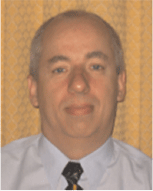
Andrew Long is geophysical adviser for PGS Geoscience and Engineering. Andrew holds geophysics degrees from the University of Melbourne and Curtin University of Technology, and a PhD (geology) from the University of WA. He has variously worked in academia and the minerals and petroleum industry. He joined PGS in 1997, working in both technical and technical marketing roles, with particular interests in survey design, rock physics and acquisition-imaging links. He was author/co-author of best presentation awards at both the IPA and SEG in 2009, and was also an SEG honorary lecturer in the same year. |

Alec J Duncan is senior lecturer, imaging and applied physics and senior research fellow, Centre for Marine Science and Technology, Curtin University of Technology. Alec has a BSc (applied physics) from RMIT, and an MSc and PhD in physics from Curtin University. He became involved in underwater acoustics when he joined the University of Bath in 1980 as part of a team developing an early bathymetric sidescan sonar, and has been working in the field ever since. He teaches physics and marine acoustics at Curtin University where he also carries out research and consulting at CMST, specialising in the propagation of low frequency sound in shallow water. |
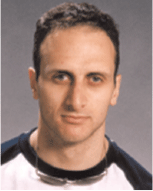
Amos Maggi is a research fellow with the CMST at Curtin University. Amos obtained a BAppSc (physics) from Curtin University. After a brief stint with the Thermal Ionisation Mass Spectrometry group, he joined CMST in 1993, initially working on acquisition and analysis of vessel motions. He has since migrated to CMST’s acoustics group, and primarily provides programming and analysis support in acoustic propagation work. |

Dr Jeremy Colman is an environmental consultant with more than 20 years of experience in marine research and management—the majority of which has been in the offshore oil and gas industry in Australia and Africa. Jeremy has expertise in environmental and social impact assessment of upstream and downstream projects—particularly on the potential impacts of seismic surveys on marine mammals and fishes—management and mitigation plans, stakeholder consultation, risk management and in oil spill risk assessment and contingency planning. |
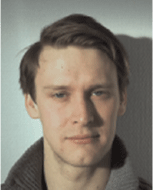
Jens Fredrik Wisløff is a research geophysicist with PGS, based in Oslo. Jens has a masters degree in industrial mathematics with specialisation in numerical analysis from the Norwegian University of Science and Technology. Since joining PGS in 2008, he has been working in various geoscience and engineering groups on the development of marine source modelling technologies. |
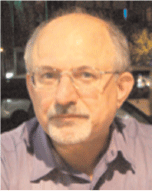
Jaafar Ali is a senior research geophysicist for PGS based in London. Jaafar has a BSc from Baghdad University, an MSc from the University of Windsor, Ontario, and a PhD in applied geophysics from Leicester University, UK. Prior to joining PGS, Jaafar worked as an assistant geophysicist with the Geological Survey of Iraq and later as an offshore independent processing QC consultant in the North Sea. After joining PGS in 1993 as an onboard processing supervisor, he moved to the research group in 1997. His work has included source modelling, seismic forward modelling, survey planning, data processing and the environmental impact of the marine seismic source. |

Averrouz Mostavan is a geophysicist in geophysical support and applications for PGS, based in Singapore. Averrouz obtained a master of science in applied geophysics from TU Delft. After joining PGS in 2007, he rotated among geophysical support, onboard QC and as business unit sales supervisor with the two-year PGS global trainee program. His responsibility now includes seismic survey design, marine source modelling, forward seismic modelling, special geophysical studies and nucleus client support. |
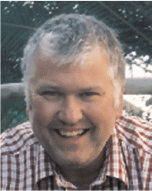
David Hedgeland is a worldwide environment manager for PGS based in London. David has a BEng (electronic engineering) from the University of Sussex, and a master’s degree in exploration geophysics (Imperial College) and environment, earth resource management (University of Kingston). He joined PGS in 1998, where he was responsible for coordinating environment research/support activities related to seismic operations and the marine environment. |
References
DEWHA, 2005—Humpback Whale Recovery Plan 2005–2010. Canberra: Australian Government Department of the Environment, Water, Heritage and the Arts.DEWHA, 2008—EPBC Act Policy Statement 2.1—Interaction between offshore seismic exploration and whales September 2008. Canberra: Australian Government Department of the Environment, Water, Heritage and the Arts.
Jenner, K.C.S., Jenner, M-N.M., and McCabe, K.A. (2001). Geographical and temporal movements of Humpback Whales in Western Australian waters. The APPEA Journal 41, 749–65.
Richardson, W.J., Miller, G.W, and Greene, C.R. (1999). Displacement of migrating bowhead whales by sounds from seismic surveys in shallow waters of the Beaufort Sea. Journal of the Acoustical Society of America 106, 2281.
Southall, B.L., Bowles, A.E., Ellison, W.T., Finneran, J.J., Gentryy, R.L., Greene, C.R., Kastak, D., Ketten, D.R., Miller, J.H., Nachtigall, P.E., Richardson, W.J., Thomas, J.A., and Tyack, P.L. (2007). Marine mammal noise exposure criteria: Initial scientific recommendations. Aquatic Mammals 33, 411–509.


